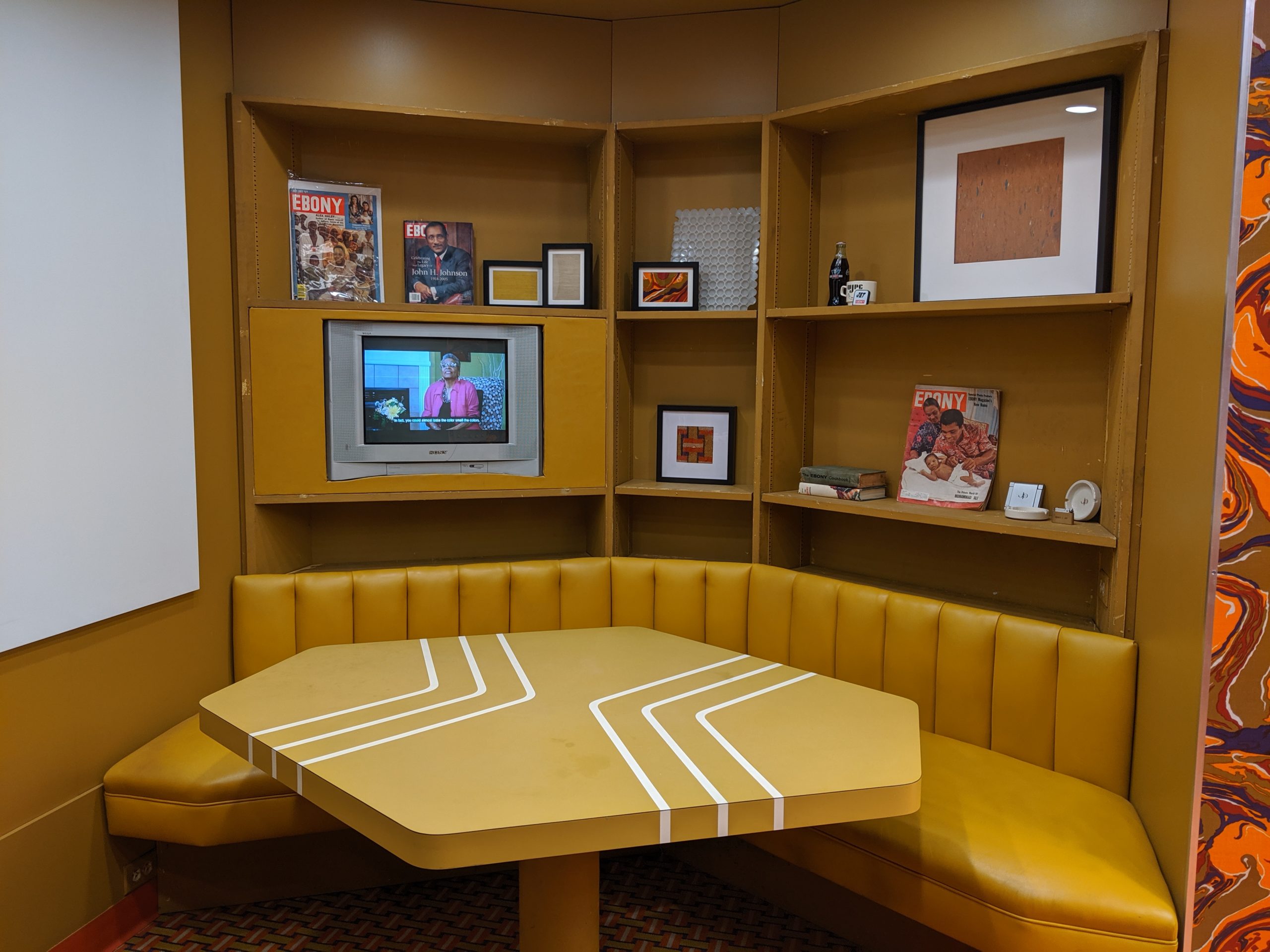In 1971, the Johnson Publishing Company installed a test kitchen for Ebony magazine at the firm’s Chicago headquarters. Used by editors to test recipes for the publication’s “A Date with a Dish” column, the kitchen elevated African American food to the national culinary conversation. Bonus: It was located in an equally groundbreaking office tower—the first in Chicago to be designed by an African American architect, John Warren Moutoussamy.
The kitchen was in use until 2010, when Johnson Publishing shut it down and sold the building, but a new exhibit by the Museum of Food and Drink (MOFAD) and The Africa Center in Harlem celebrates its design and gives people a chance to explore the space.
On display at Aliko Dangote Hall until July 17, the Ebony Magazine Test Kitchen is part of the new exhibit African/American: Making the Nation’s Table. As rebuilt, the kitchen is a psychedelic wonder that exudes Black style, with Afrocentric prints, leather, and ostrich feathers. “It has all kinds of orange, purple, avocado green, and rust colors,” said curatorial director Catherine Piccoli.

In some ways, the kitchen was ahead of its time, Piccoli said, “with all sorts of really cool and useful state-of-the-art kitchen gadgets.” The list of features originally included a microwave oven, a barbecuer, toasters, can openers built into the walls, a trash compactor, an automatic dishwasher, and a food preparation center. Many of those elements are present in the re-creation, but MOFAD elected to make minor modifications.
“We really wanted people to be able to walk through [the space],” Piccoli explained. “When we put it back together, we expanded the kitchen by about 14 inches so that one side is accessible for visitors to walk through. We felt it was important for people to be in the kitchen.”
Visitors may explore, but it’s a museum after all, so portions are blocked off to protect sensitive artifacts. They can, however, enjoy the food-themed playlist curated by singer-cum-chef/farmer Kelis, who graduated from Le Cordon Bleu culinary school.
“What I want people to take away from the exhibition and the kitchen is that the contributions of African Americans to American cuisine are foundational and ongoing,” Piccoli said. “It’s not just soul food or Southern cuisine, but really the showcased diversity of the African diaspora.”
